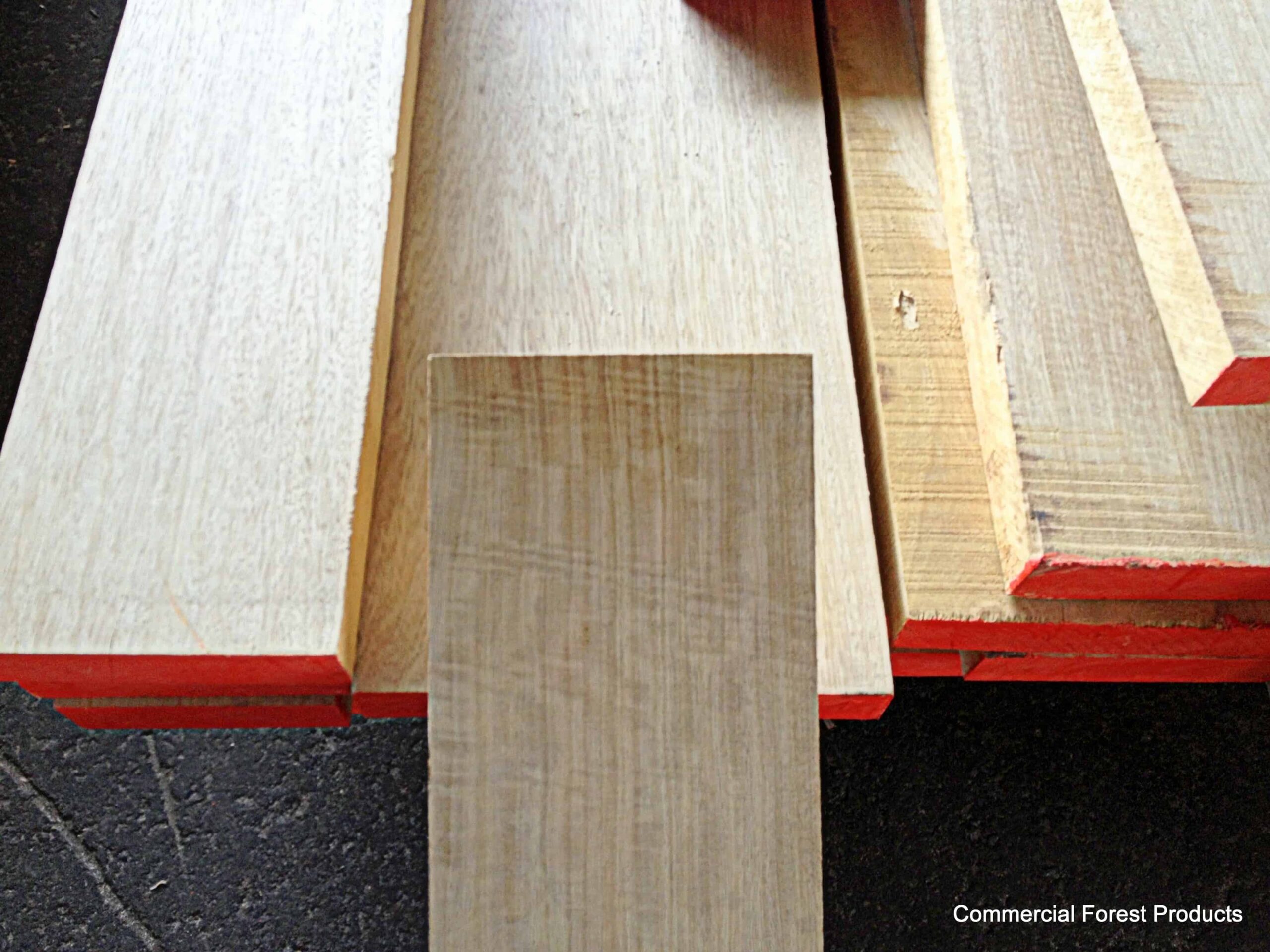
8/4 White Limba Specie Information
8/4 White Limba color is typically pale blond to yellowish white. Although the average density of White Limba is often listed at 35LB/cubic foot, There is a high range of density variation in this specie. Often, soil differences and growth rates in the various regions of Africa where Limba is grown result in different wood densities. We have observed the same phenomenon with Genuine Mahogany.
White Limba vs Black Limba
White Limba and Black Limba are the same specie. Additionally, Korina wood is the same thing as Limba.
The white and black designations refer to the appearance of the lumber. The designation of Limba colors is often subjective. Thus, if two mills look at the same Limba board, one may classify it as black and the other white.
Generally speaking, Black Limba has dark streaks and a reasonable degree of black & white color variegation. Alternatively, White Limba has a cleaner uniform bright color with less streaking. However, there are not formal standards for what constitutes black or white Limba.
8/4 Korina Wood vs Mahogany
In terms of tone, 8/4 Korina has many characteristics similar to Genuine Mahogany. Both Black and White varieties of Korina are cut from the same the same tree. Thus, their sonic qualities are comparable. As we wrote about in the Black Korina guide, the sound is well balanced with distinct treble and bass.
White Limba Wood Data
- Scientific name: Terminalia Superba
- Alternative Names: Frake, Ofram, Korina, Afara , Akom
- Region of Origin: Western Africa
- Average Dried Weight: 34.5 LB/cubic foot
- Janka Hardness Rating: 675
- Specific Gravity: .57
- IUCN Red List: No
- CITES wood: No
Map of Limba Producing Region
Korina (Terminalia Superba) grows in Western areas of Africa. Specifically, much of 2019 production originates from the Congo region.
Korina Gibson Guitars
White Limba became an iconic electric guitar tonewood in the mid 1950’s. Gibson Guitars plucked this specie from relative obscurity and re-branded it Korina wood. Gibson used a proprietary name in order to hide their new wood source from their competitors.
It has also been reported that the Korina name was not a Gibson creation. Rather, the name was already being used for a type of plywood with a limba face veneer.
Regardless of its true origin, Gibson popularized the Korina name. When someone requests Korina they are most certainly looking for instrument wood. Although most people use Korina in reference to White Limba, some people use it interchangeably for black or white.
White Limba Flying V & New Gibson Models
Interestingly, Gibson used Korina in a series of radical new Gibson models in the mid 1950’s.
Gibson designers presented these radical models as an answer to the growing popularity of Fender’s Stratocaster and Telecaster models.
It is my opinion that the renaming of Limba to Korina was due in part to Gibson’s launching of its new Moderne, Futura, Korina Explorer and Korina Flying V designs. The new Gibson concept models were marketed with an otherworldly flavor. Thus, Korina was tapped as a new wood for a new style of electric guitar.
Early Korina Wood Guitars: Customer Reception
While the Moderne and Futura failed to launch, the Flying V and Explorer models had better success. Regardless, the initial runs from the 1950’s were only in the low hundreds.
Today, the original Gibson Korina Flying V‘s and Explorers from that first run are worth close to a half million dollars.
Here is how Dave Hunter describes Korina wood:
This is the tone wood of the space aged Gibsons of the late 1950’s – the flashy Flying V and Explorers, along with the mythical Moderne and Futura that Gibson is said to have designed along with them, but never to have produced – which fell flat among a relatively conservative market at the time, but now fetch in excess of $100,000 among collectors. The wood probably doesn’t have much bearing on the value of these guitars it isn’t as expensive as some other exotic tone woods, although it can be quite rare – but Korina is indeed a warm, resonant, balanced performer when used for a solid guitar body. It also yields great clarity, definition and sustain.
source: Hunter, D. (2006) The Electric Guitar Sourcebook: How to Find the Sounds You Want, page 13.
Korina Moderne & Futura Guitars
Of course, the electric guitar industry has a long history of capitalizing on nostalgia. Not surprisingly, Flying V’s and Explorers have been reissued several times. Perhaps more surprisingly are the Moderne and Futura re-issues. In the case of the Gibson Futura, the design was never actually issued, only re-issued in 1996.
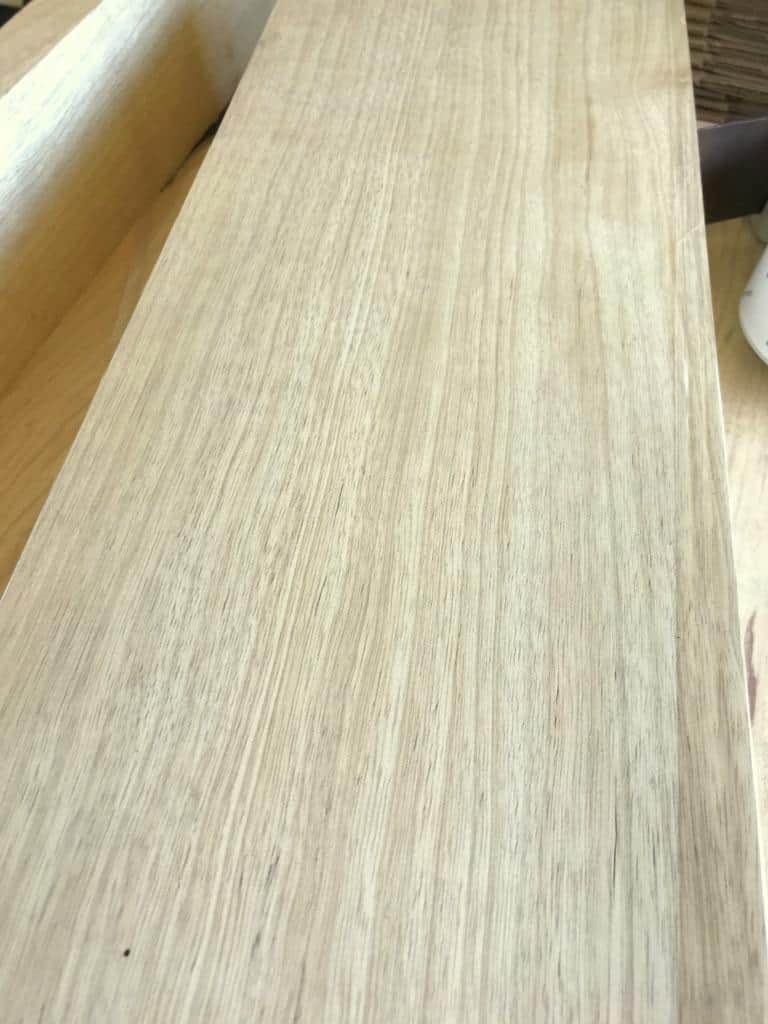
Vintage Blond Korina Color
In addition to Gibson, guitar manufacturers Hamer and Paul Reed Smith use White Limba (or Korina) regularly for body wood and neck wood. Additionally, Washington-based Warmoth Custom Guitar Parts produces electric guitar bodies and necks using Korina.
Moreover, Vintage Guitar Magazine often features vintage Korina guitars. It is a wood that holds a dear place in the hearts of vintage guitar aficionados.
Color is a critical specification. The wood needs to be processed quickly and properly kiln dried to obtain a bright white color. If logs are not processed in a timely manner stains and mold can develop which will be visible in the processed lumber later on. As with most color-sensitive woods, the expertise of the sawmill and kiln drying play a key role in the appearance of the sawn wood.
Mold and Stain Issues with White Limba
Although all sawn timber has the potential to pick up mold stains during processing, lighter color woods are particularly susceptible. Limba grows in sub tropical climates such as Guinea and Zaire. Funguses and bacteria often target Limba as a result of sugars inside the wood. The result can black and green stains that penetrate the wood rendering it unsuitable for natural clear coat finishes.
Sometimes the same mold stains in Black Limba are not as problematic since the wild contrasting colors and variegated grains associated with Black Limba camoflague the stains. In terms of odd colorations, Black Limba is certainly more forgiving than White Limba.
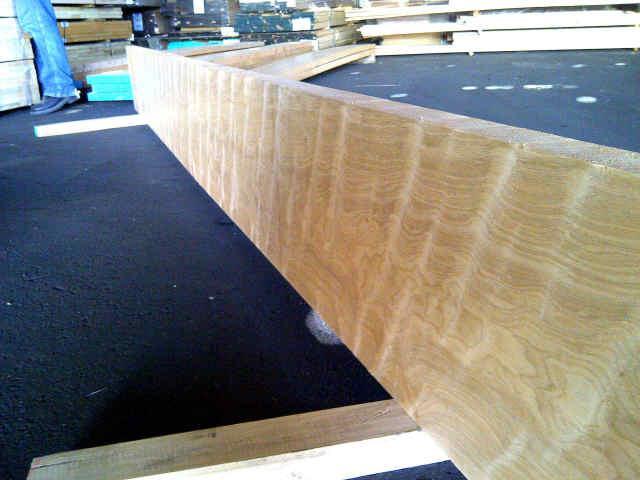
Curly Figured Limba
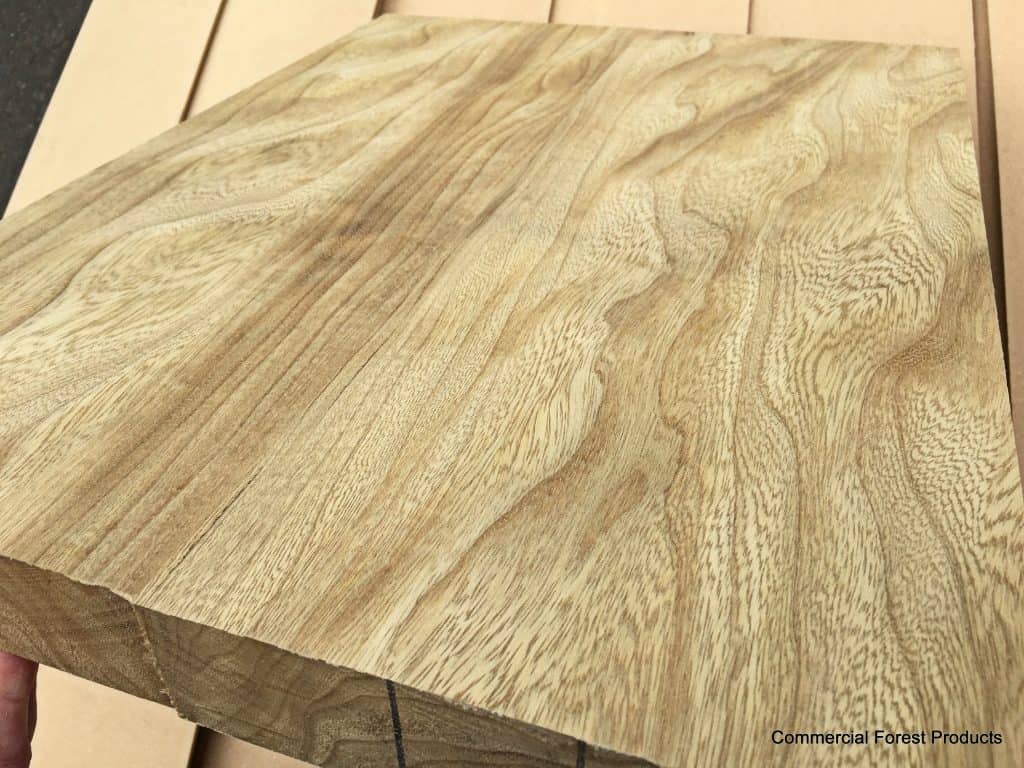
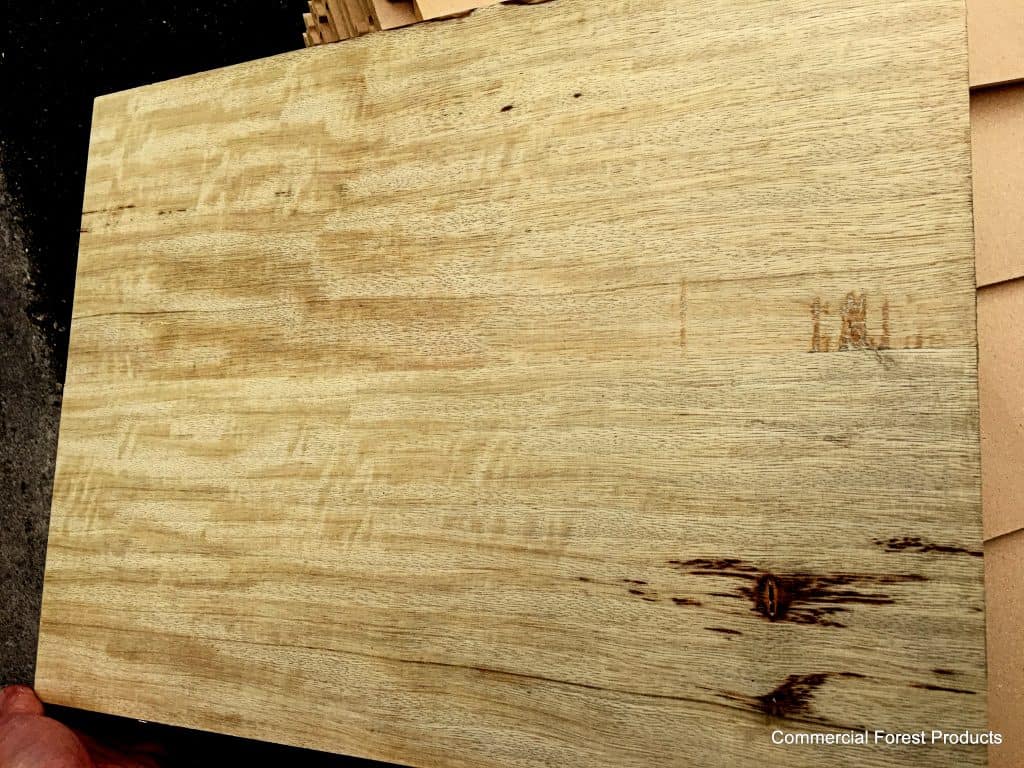
How to Finish White Limba Wood
Korina has a consistent medium texture. Like Oak and Ash, Korina wood has open grain pores that require filling in order to achieve a smooth glass-like finish.
The most difficult step associated with finishing Korina is the grain filling. Once the grain is filled, Limba will take any number of standard wood finishes well, without use of professional grade applicators.
Shellac
Woodworkers can apply anything from semi-matte to gloss. It is a run on, non-toxic cloth application. Better results can be obtained from mixing shellac from dry flakes than purchasing pre-canned shellac.
Tung Oil
First, sand the Korina wood. Then apply the first coat of tung oil. Next, grain fill the open pores. Re-apply tung oil applications, as needed.
Danish Oil & Poly
Saturate the Korina wood in Danish Oil. Allow the oil to penetrate for 7 days undisturbed. Next, apply 4 coats of wipe-on poly. Make sure to sand between applications. Allow the poly to cure for 7 days. Then finish the process by sanding with superfine steel wool and wood wax to create a uniform surface. Finally, buff with wood wax to create a strong durable yet simple finish.
Tru-Oil French Polish
After sanding the Korina lumber, liberally apply a thick coat of Tru-oil. Wipe and rewet the wood for roughly 15 minutes. Then remove all excess tru-oil with a rag. Allow the oil to penetrate undisturbed for 24 to 48 hours. Then take 400 grit sandpaper and dab it in tru-oil before sanding the Korina in a circular motion to create a slurry of sand & oil. Work this slurry into the grain, making sure to work back and forth against the grain. Then wipe off the excess slurry with a rag. Let the wood sit undisturbed for a day.
Repeat this combined tru-oil/sanding process with 600 grain, then 1200 grit sandpaper. Using a 400 count cotton sheet, slice it into a one foot square and roll it into a uniform surface ball. Dip the ball in some tru-oil and buff the Limba’s surface. Take another balled up cotton square, add a dab of lemon oil and wipe with (not against) the grain. Buff and polish to completion. Although Tru-oil is a very popular finishing option for Limba, be aware that Tru-oil does tint the appearance of Korina somewhat. If maintaining a natural Limba color tone is important, you may prefer other finish alternatives.
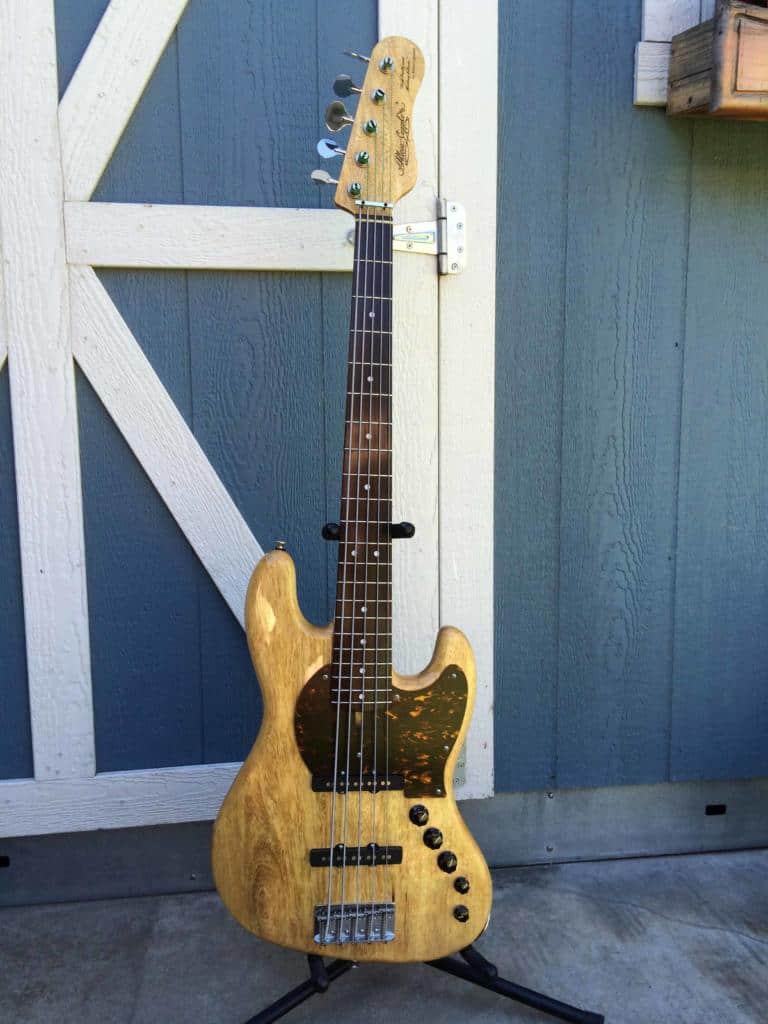
My Custom Made Korina Alleva Coppolo 5 string Bass
Back in 2012, I worked with Jimmy Coppolo of Alleva Coppolo Basses & Guitars on a few projects supplying woods for special limited bass runs. At that time I was grading single piece Korina body blanks.
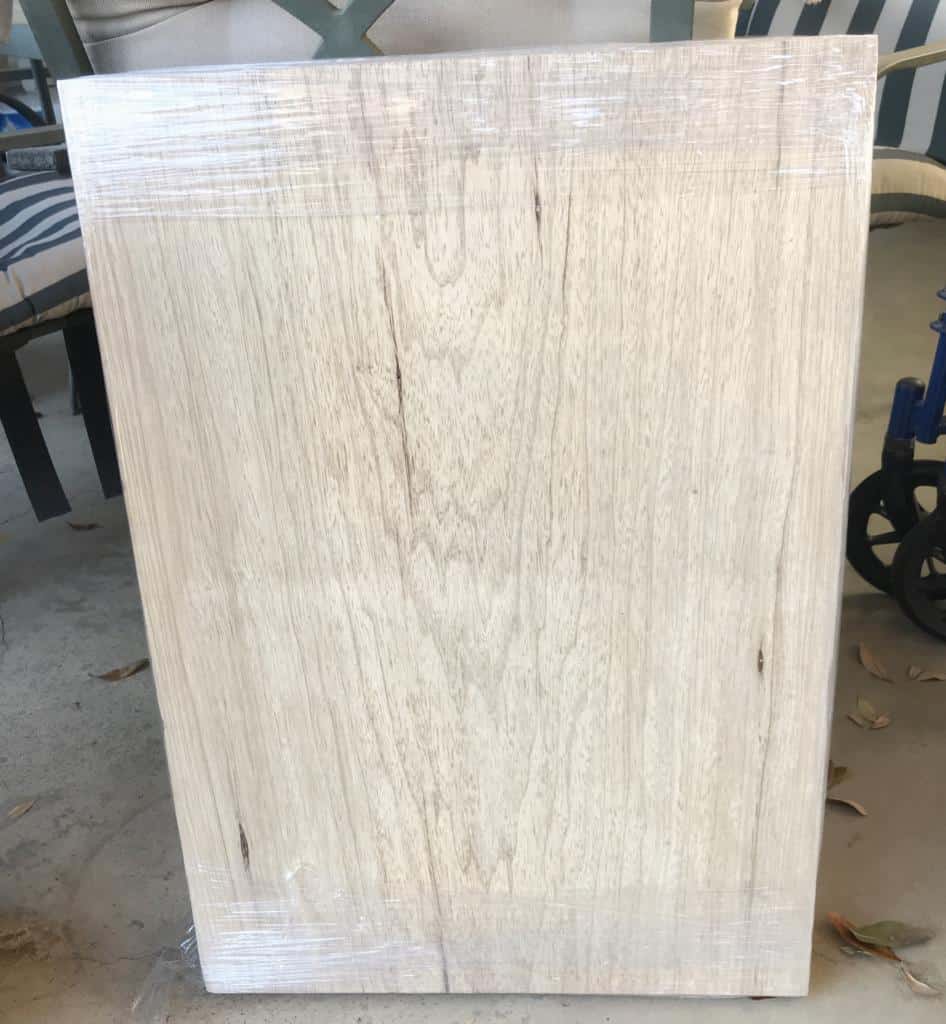
I wondered why there were not many basses made of Korina wood. Up to that point most of the Korina instruments I saw were electric guitars.
I asked Jimmy if he could make an LG-5 bass with a single piece Korina body and matching Korina neck. Despite being buried in a sea of back-orders, Jimmy said he would build my dream bass.
Korina Wood Bass
Ultimately, this turned into a special run of Alleva Coppolo Korina basses, a few of which were auctioned off to raise money for charity at a later Bassacre event.
Bassacre Events
It’s difficult to describe Jimmy Coppolo to anyone who doesn’t know him. Although he has the resume, Master Luthier, doesn’t feel right. Maybe Wood Whisperer?
He is all of the following:
- Friend to all animals.
- Incredibly humble and gracious.
- New York native. He worked at Rudy’s Music in NYC.
- Conspiracy theorist
- Vintage Fender Pantomath.
- Primarily a guitar player, not bass. Go figure!
- Voracious worker.
- Super cool guy and friend.
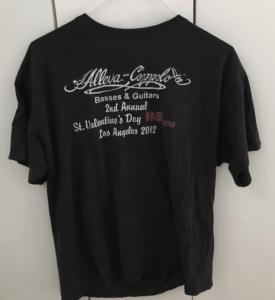
Jimmy’s Bassacre events were annual get-togethers for Alleva Coppolo fans, associates and musicians. The events were typically held around Valentine’s Day each year. I believe that is how he came up with the name Bassacre. It is a derivative of the Valentines Day Massacre. I wasn’t there for the brain-storming session but I can definitely imagine Jimmy saying “Yeah, it’s totally a Bassacre!”
Bass Players
I met tons of cool players at Jimmy’s Bassacre parties:
Jimmy’s Bassacre events were special because everyone was very laid back. It was more like a hang, except there was a smattering of world class musicians wandering around the room, casually chatting with bass geeks, such as myself. Bring back the Bassacre!

Below are more photos of my Alleva Coppolo LG5 Korina. It is very similar to the one he auctioned off at the Bassacre event. Ah, the memories!
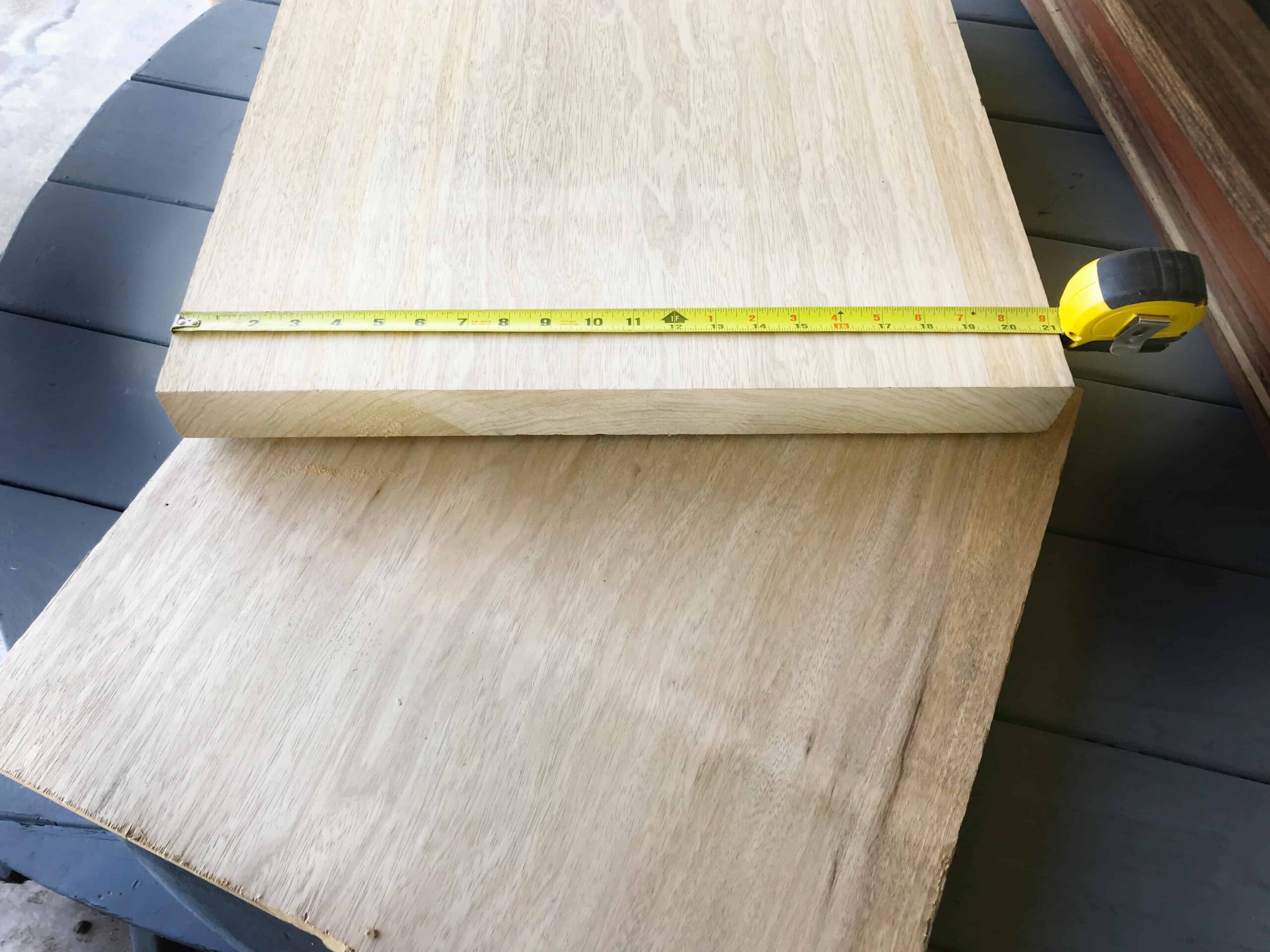



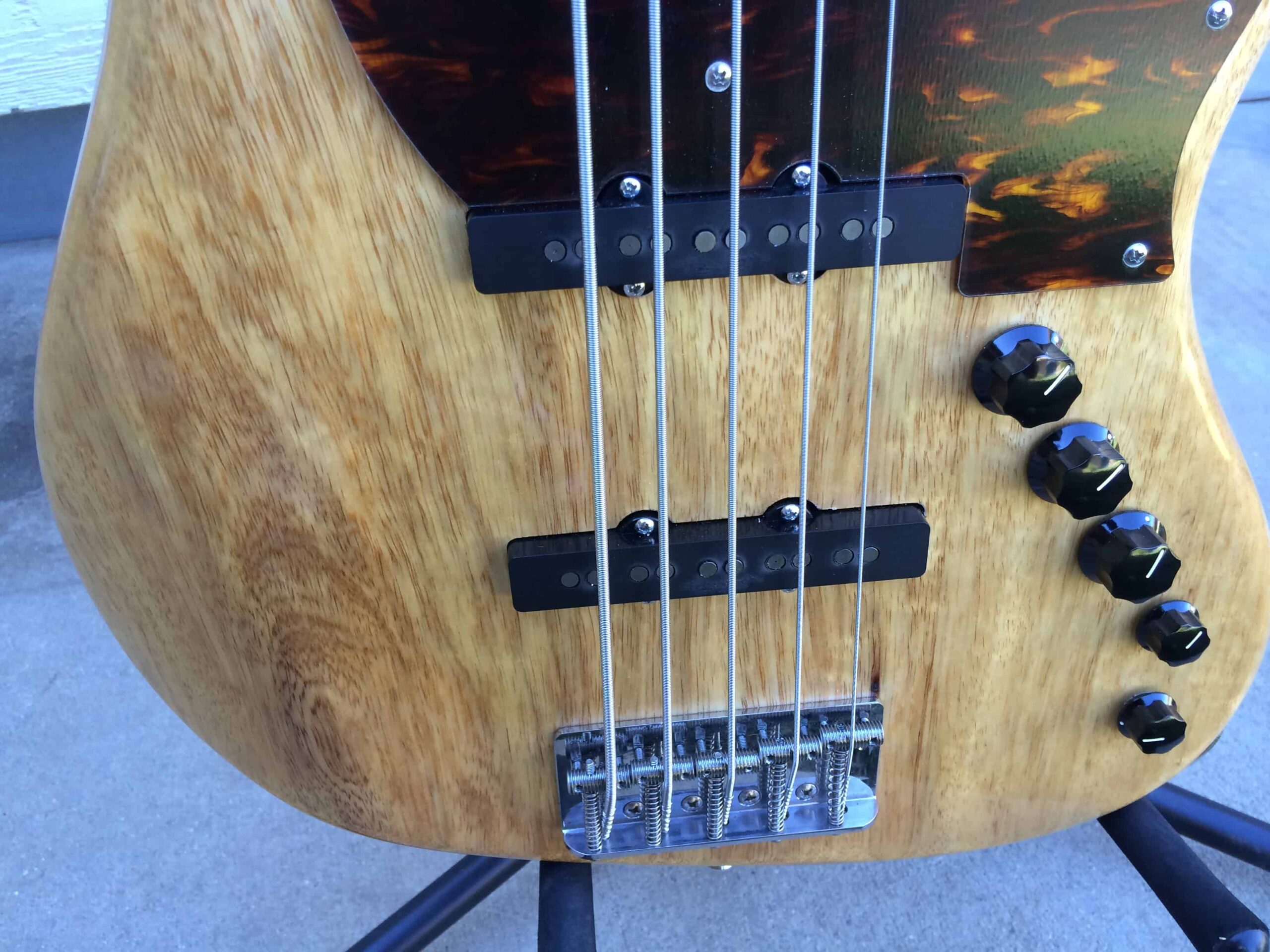
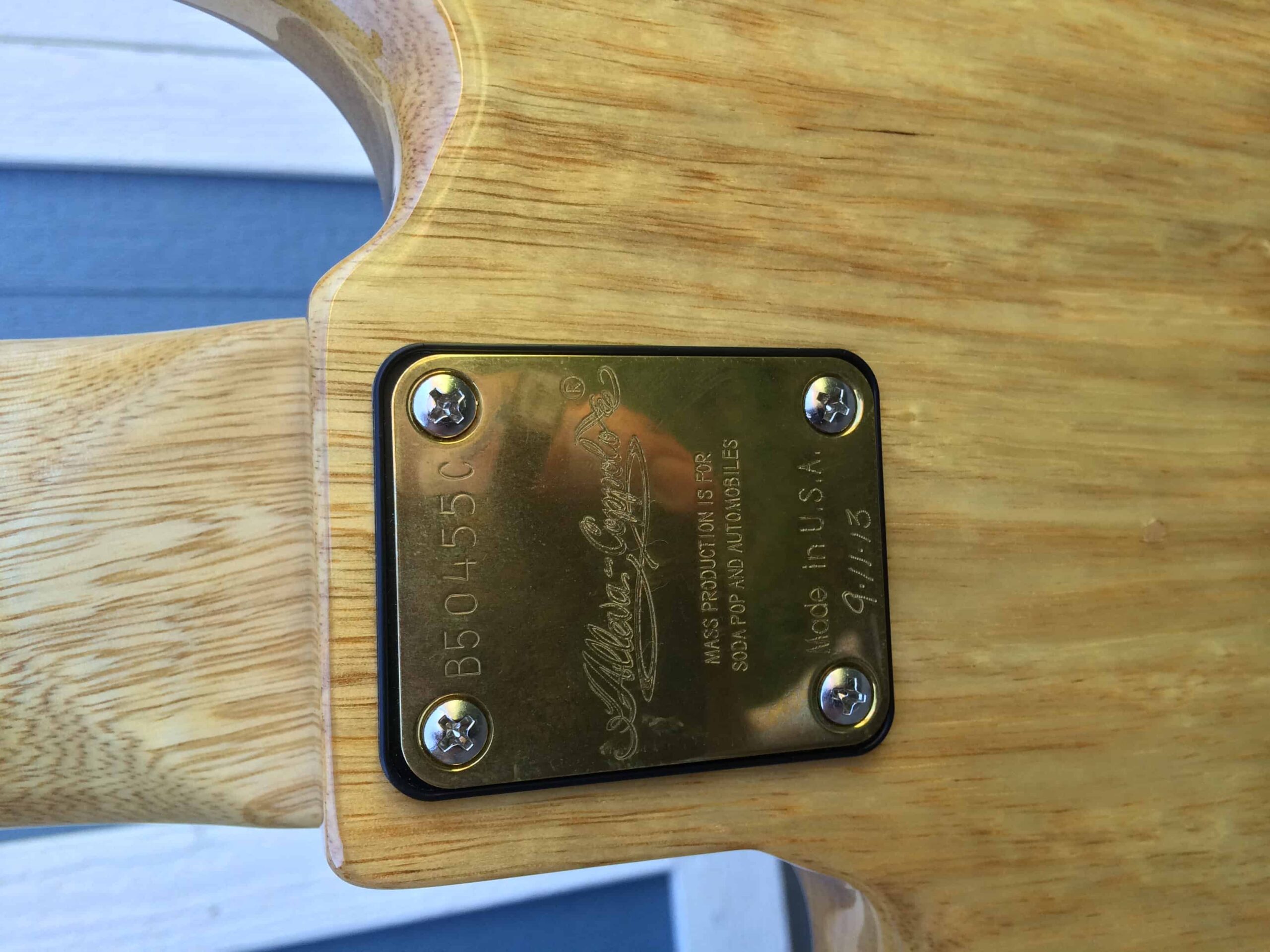
Pingback: 🌳 Pau Ferro: Indian Rosewood Alternative - Commercial Forest Products
Pingback: 🌳 Black Limba Wood - A Helpful Illustrated Guide - 2019
Pingback: 🌳 Quartersawn Maple: A Helpful Illustrated Guide to Hardwood - 2019
Pingback: 🌳 Good Genuine Mahogany - Where is it? - Commercial Forest Products
Pingback: ROASTED MAHOGANY WOOD - Commercial Forest Products
Pingback: AWFS Show 2021 Woodworking Fair | Las Vegas - Things To Know! - Commercial Forest Products
Pingback: AYOUS LUMBER | OBECHE WOOD | WAWA | SAMBA - Commercial Forest Products
Pingback: CHATOYANCY - What Is Chatoyance In Figured Wood?
Pingback: Top 5 Best Wood For Guitar Bodies By A Lumber Professional - Commercial Forest Products
Pingback: Korina Neck Blanks ~ White Limba Guitar Wood - Commercial Forest Products